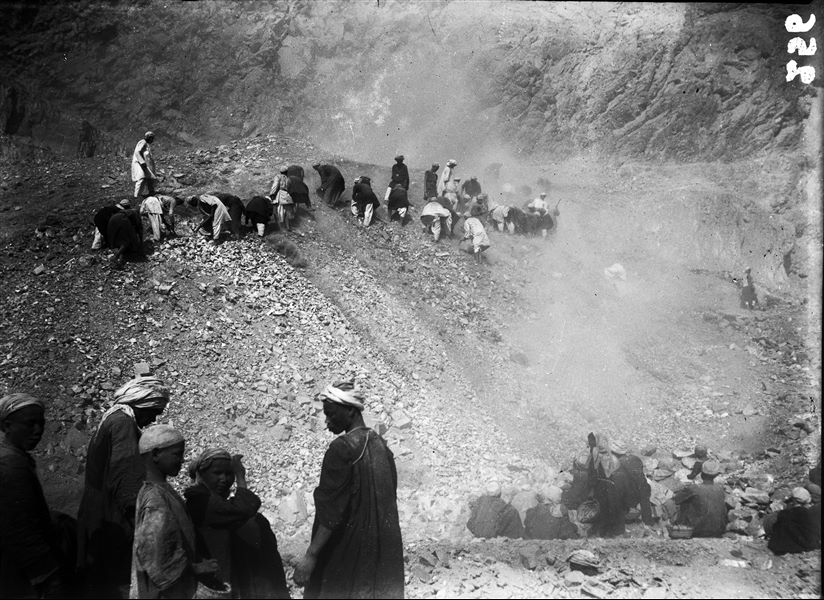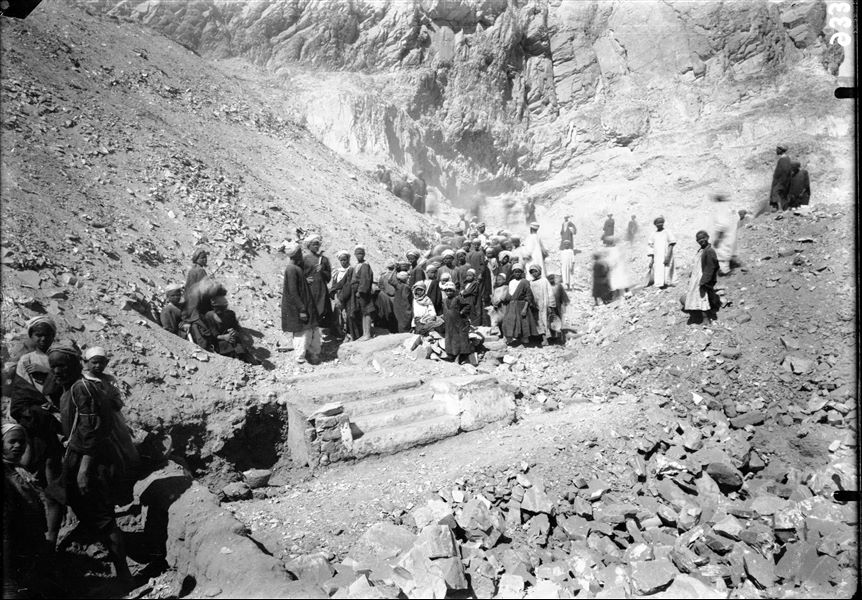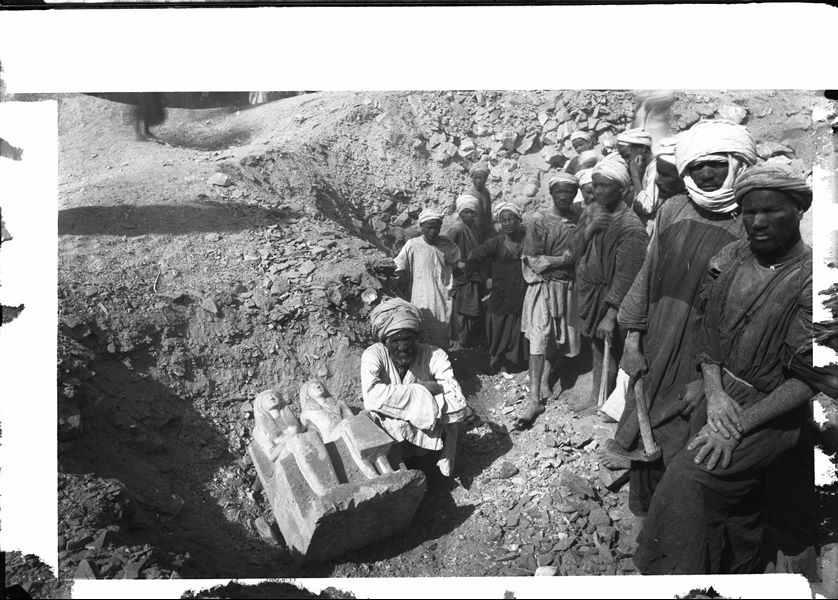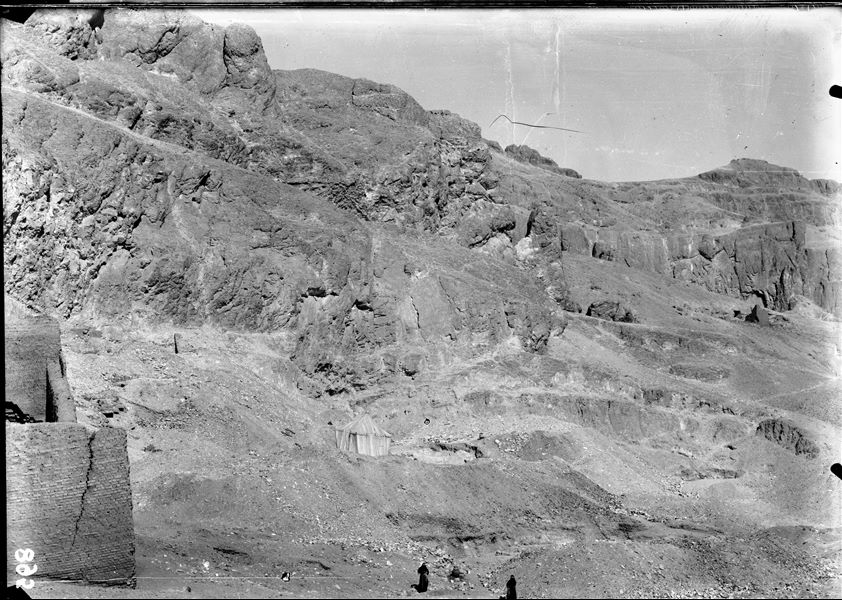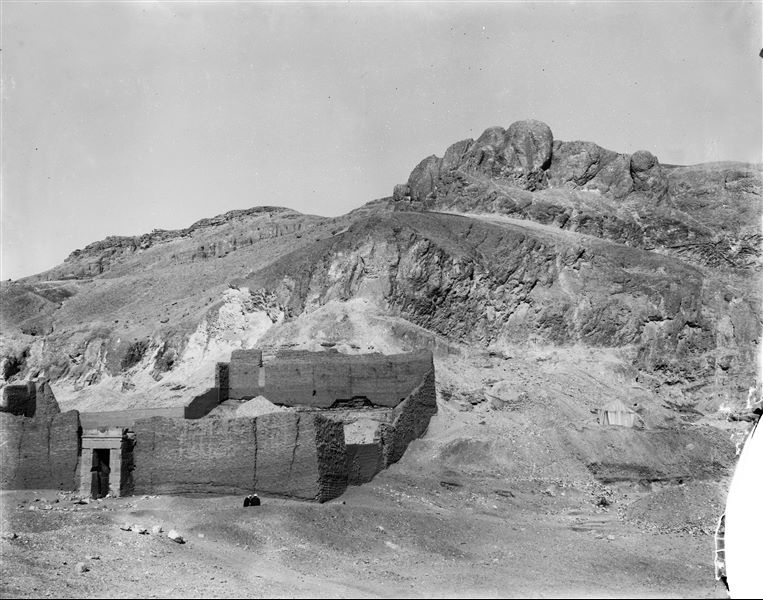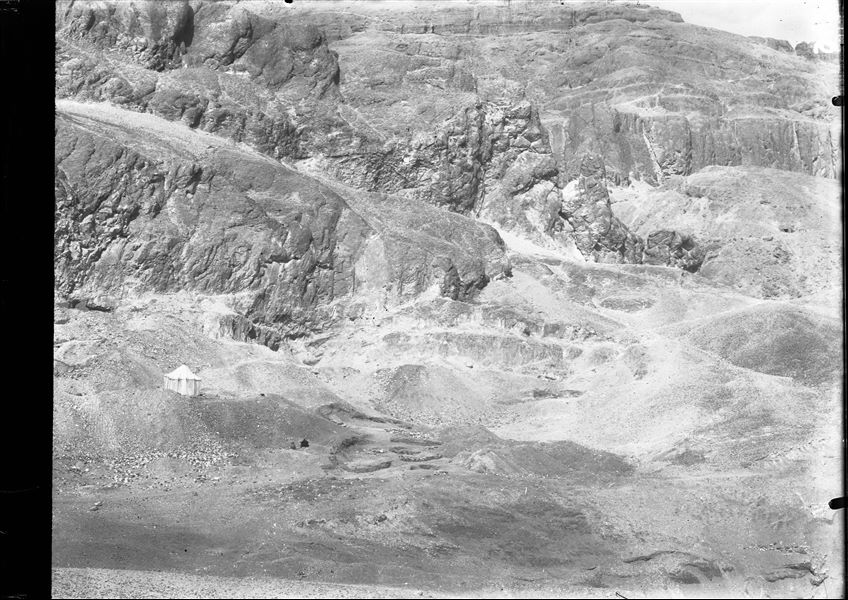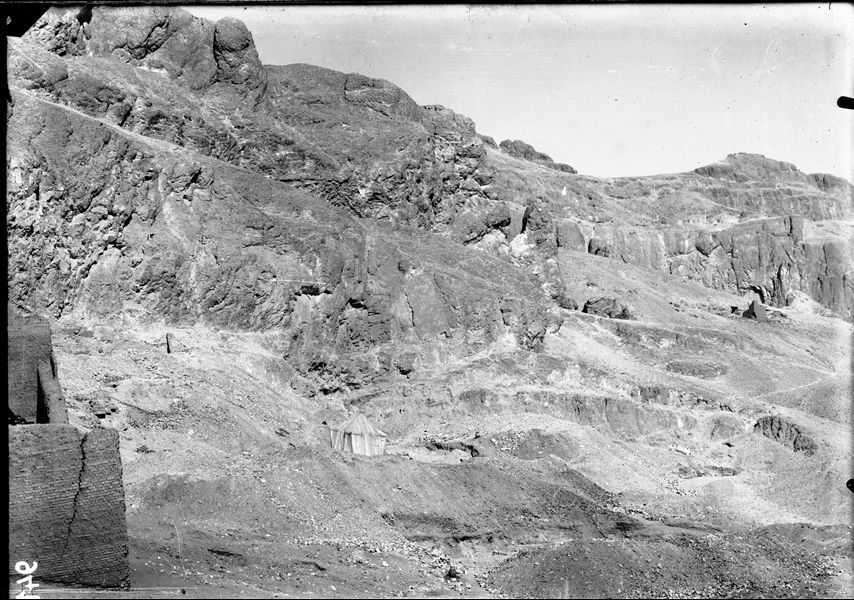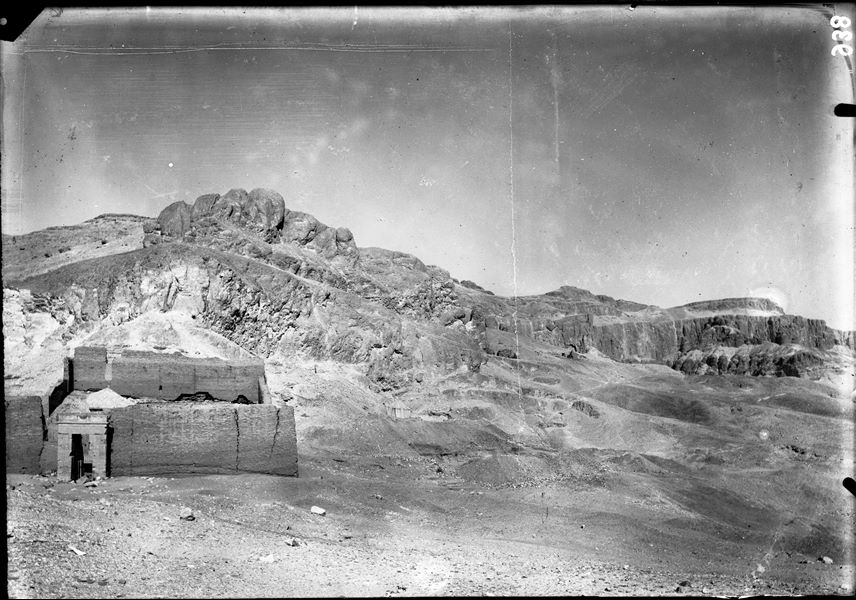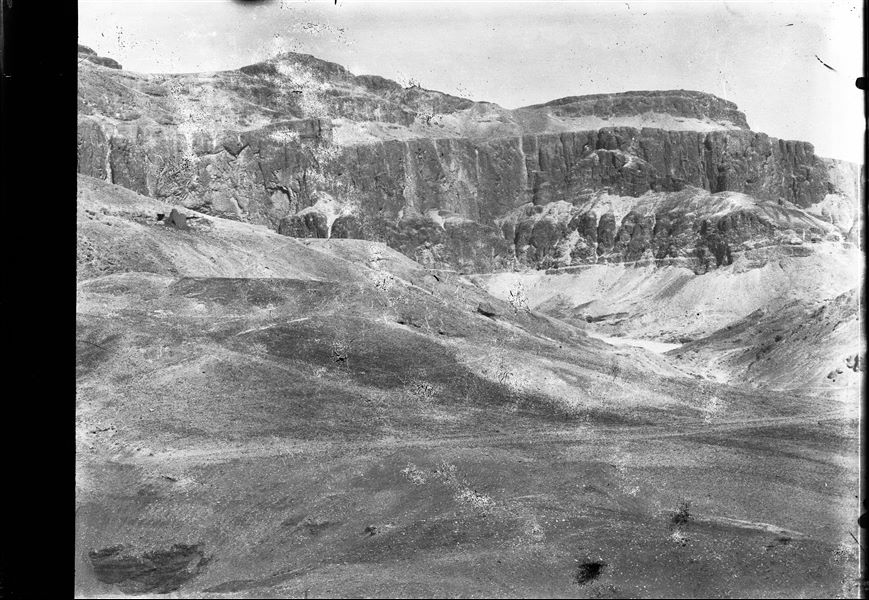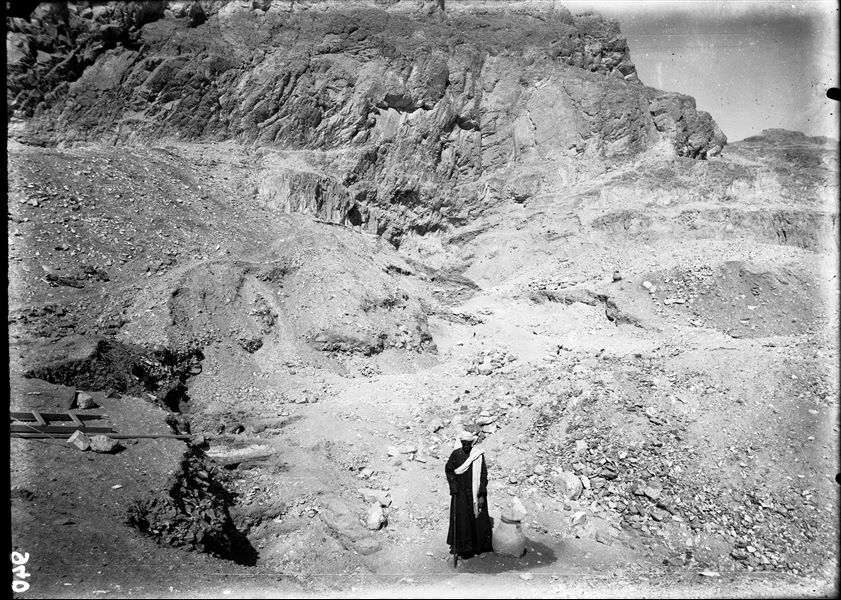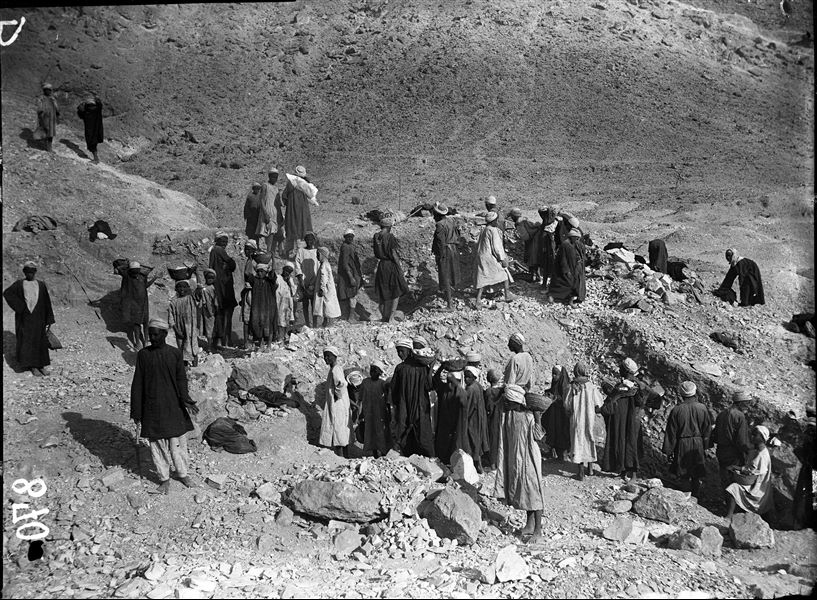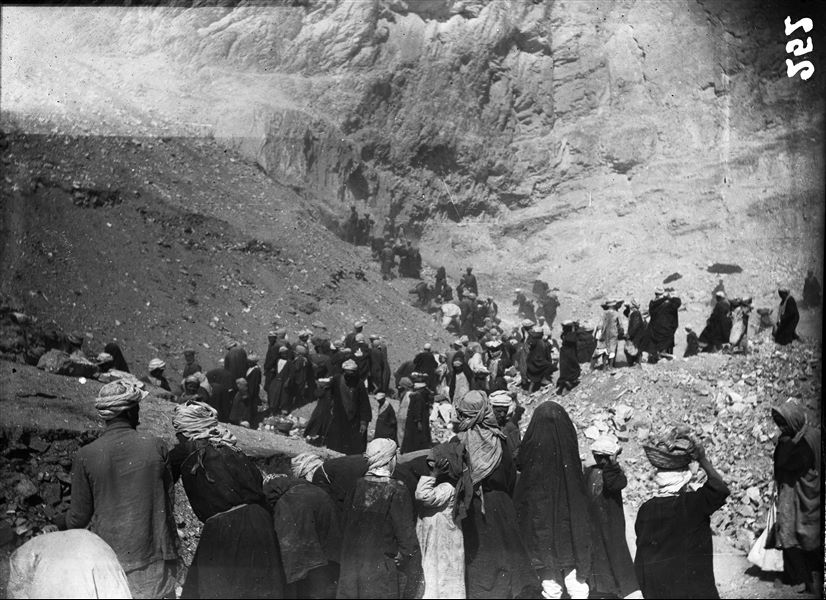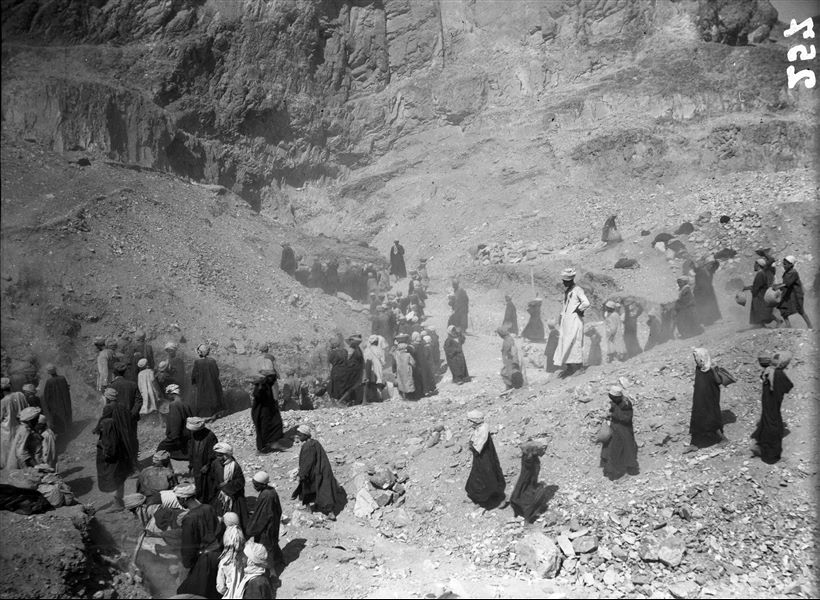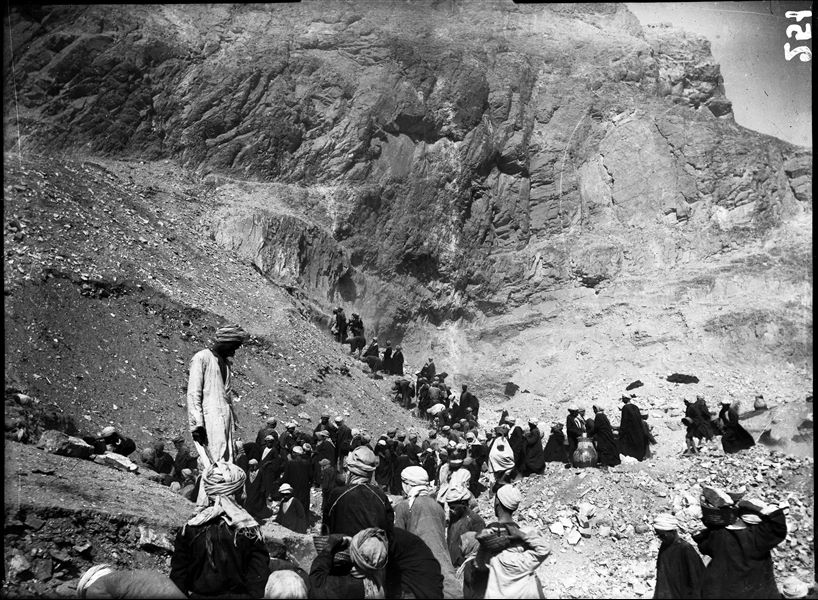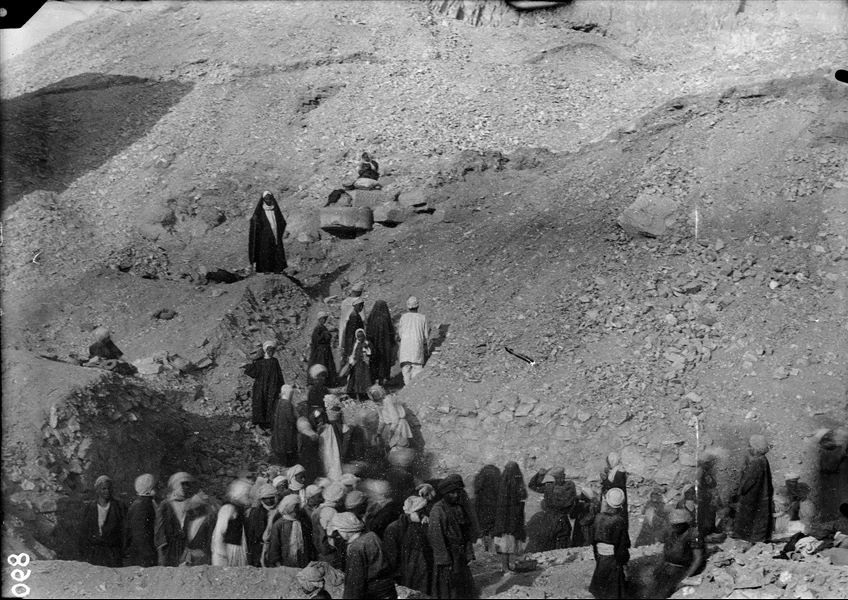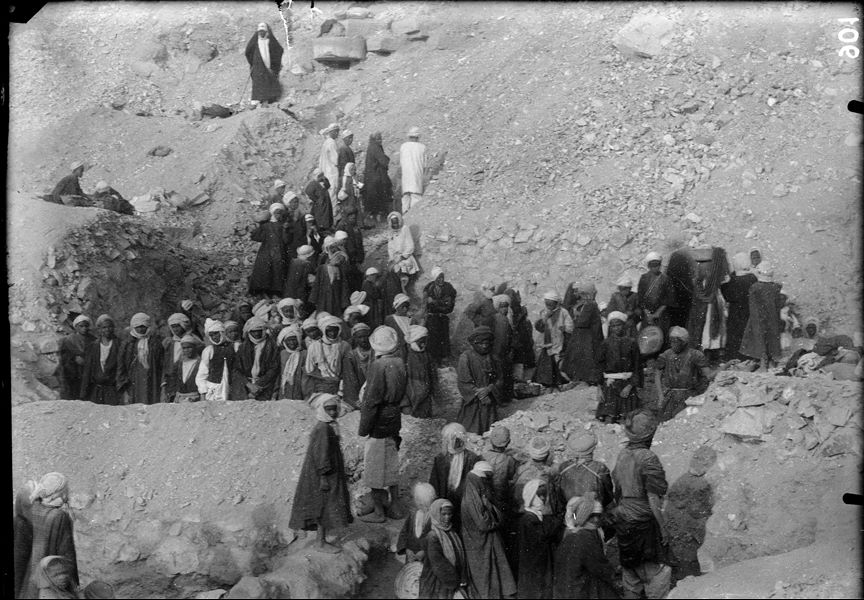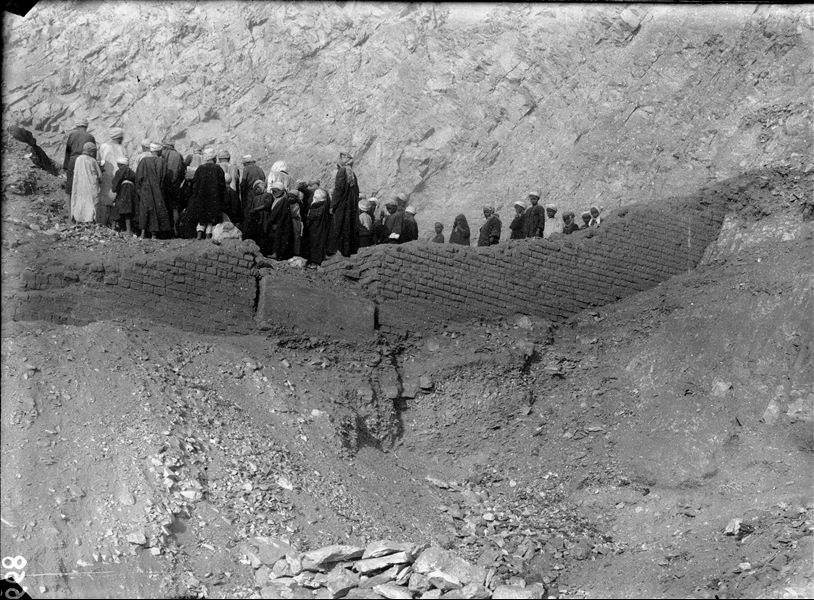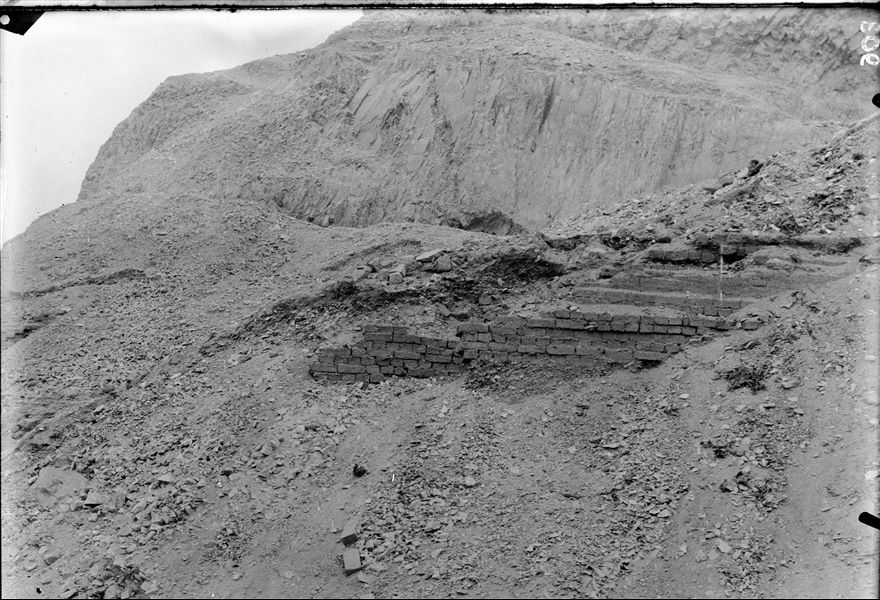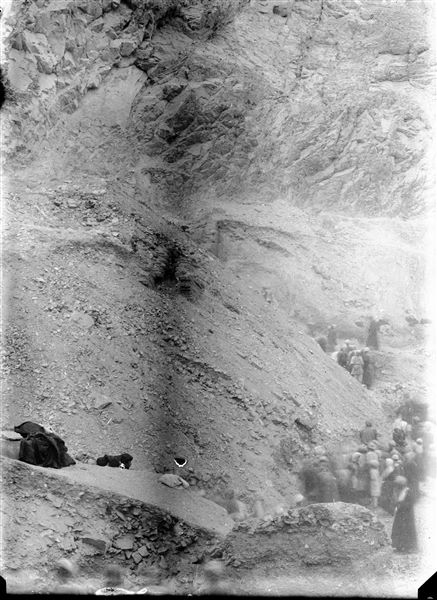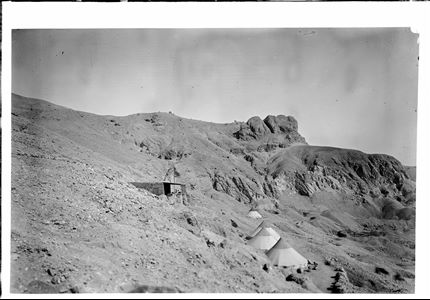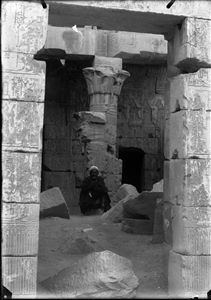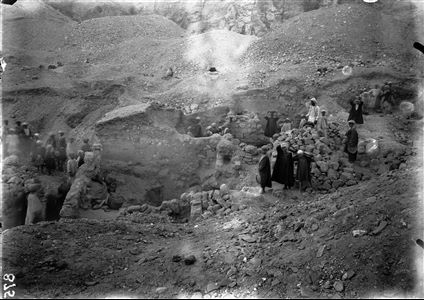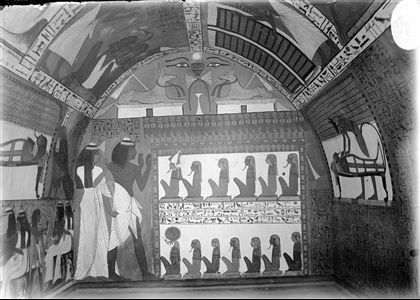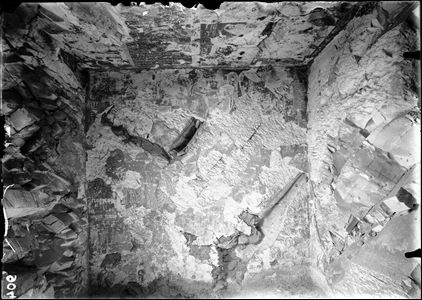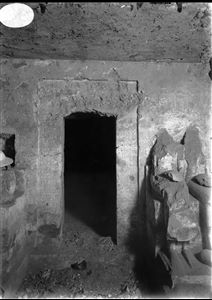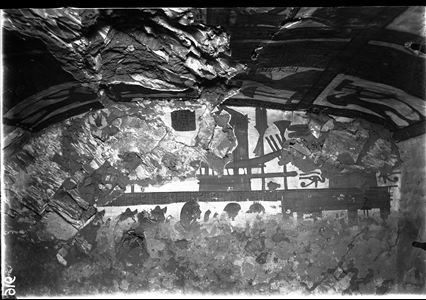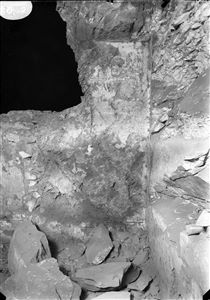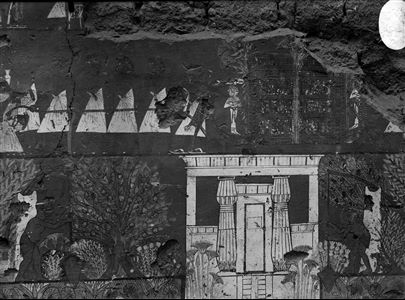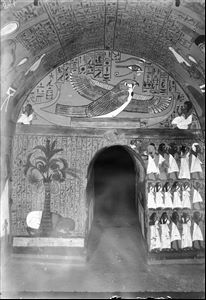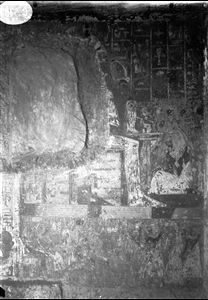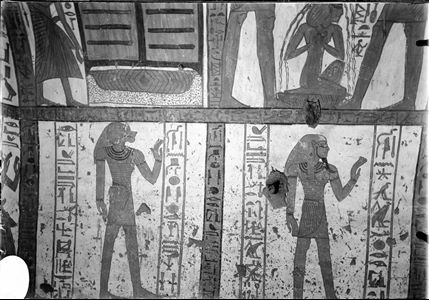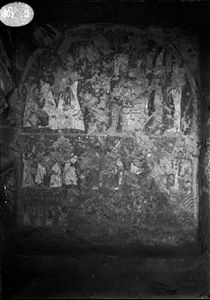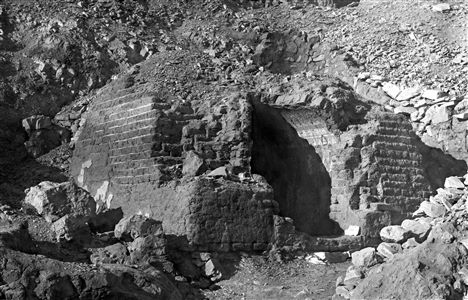Excavations along the slope of the mountain, on the right side of the temple of the goddess Hathor. Schiaparelli excavations.
Excavations along the slope of the mountain, on the right side of the temple of the goddess Hathor. Schiaparelli excavations.
Excavations along the slope of the mountain, on the right side of the temple of the goddess Hathor. Stairs leading to a chapel G, with cartouches of Seti II. Schiaparelli excavations.
Excavations along the slope of the mountain, on the right side of the temple of the goddess Hathor. Stairs leading to chapel G, with cartouches of Seti II. Schiaparelli excavations.
Excavations along the slope of the mountain, on the right side of the temple of the goddess Hathor. Relief from chapel G, with the cartouches of Seti II, inscribed over those of Amenmesse (S.06136). Schiaparelli excavations.
Excavations along the slope of the mountain, on the right side of the temple of the goddess Hathor. Relief from chapel G, with the cartouches of Seti II, inscribed over those of Amenmesse (S.06136). Schiaparelli excavations.
Excavations along the slope of the mountain, on the right side of the temple of the goddess Hathor. This photograph shows the moment of discovering the statue of Pendua and his wife Nefertari (S.06127). Schiaparelli excavations.
Excavations along the slope of the mountain on the right side of the temple of the goddess Hathor. The removal of a sarcophagus from a tomb shaft, (S.07715). Schiaparelli excavations.
View of the archaeological area to the right of the temple of the goddess Hathor. On the lower left, the enclosure wall of the temple is visible. In the centre there is a tent, not belonging to the members of the mission but probably to the local guards. At the bottom, there are two Franciscan friars from the nearby missionary station of Luxor. Schiaparelli excavations.
General view of the temple of the goddess Hathor and the surrounding area, before excavations began. Schiaparelli excavations.
General view of the temple of the goddess Hathor and the surrounding area. Visible on the right is the support tent for the security of the camp. Schiaparelli excavations.
General view of the northern area of the necropolis, before excavations began. In addition to documenting the site, these images helped to scan the terrain in order to detect depressions (even when barely visible to the naked eye) indicating the possible presence of tomb shafts or structures coming out of the ground. Schiaparelli excavations.
General view of the northern area of the necropolis, before excavations began. In addition to documenting the site, these images helped to scan the terrain in order to detect depressions (even when barely visible to the naked eye) indicating the possible presence of tomb shafts or structures coming out of the ground. Schiaparelli excavations.
General view of the northern area of the necropolis, before excavations began. In addition to documenting the site, these images helped to scan the terrain in order to detect depressions (even when barely visible to the naked eye) indicating the possible presence of tomb shafts or structures coming out of the ground. Schiaparelli excavations.
General view of the northern area of the necropolis. Clearly visible is the massive wall that borders the area of the temple. Above, the paths leading to the hill are visible, along with its small settlement. From here it is possible to descend to the Valley of the Kings or the Valley of the Queens, or climb to the top of the mountain. Schiaparelli excavations.
General view of the northern area of the necropolis, prior to the start of excavations. Visible at the bottom are the walls of the temple dedicated to the goddess Hathor. Schiaparelli excavations.
General view of the northern area of the necropolis, before excavations began. In addition to documenting the site, these images helped to scan the terrain in order to detect depressions (even when barely visible to the naked eye) indicating the possible presence of tomb shafts or structures coming out of the ground. Schiaparelli excavations.
Overall view of the temple dedicated to the goddess Hathor. Above the entrance of the temple, are the supports for the roof set up in front of the mission’s small house. Schiaparelli excavations.
Northern end view of the area to the right of the temple, prior to the start of excavations. Schiaparelli excavations.
Excavations to the right of the temple. Two jars were found in this location containing 33 rolls of Demotic and Greek papyri, housing administrative texts dated between 171 and 104 B.C.E. The discovery took place around the middle of March 1905 by Roberto Paribeni, who was part of the mission that year. Schiaparelli excavations.
Excavating in the final section of the Valley. Presumably Schiaparelli excavations.
Excavations to the right of the temple. Two jars were found in this location containing 33 rolls of demotic and Greek papyri, housing administrative texts dated between 171 and 104 B.C.E. The discovery took place around the middle of March 1905 by Roberto Paribeni, who was part of the mission that year. Schiaparelli excavations.
The two jars containing the papyrus scrolls discovered in 1905. Photograph taken at the Museum . Schiaparelli excavations.
Excavations to the right of the temple, up the mountain slope. The employment of a large number of workers was necessary to systematically assess the soil until the ancient stratigraphic layer was reached. Schiaparelli excavations.
Excavations to the right of the temple, up the mountain slope. The employment of a large number of workers was necessary to systematically assess the soil until the ancient stratigraphic layer was reached. In the centre of the picture there is a pole that indicates the next area to be excavated, with special precautions. Visible on the left of the image is Benvenuto Savina. Schiaparelli excavations.
Excavations to the right of the temple, up the mountain slope. The employment of a large number of workers was necessary to systematically assess the soil until the ancient stratigraphic layer was reached. In the centre of the picture there is a pole that indicates the next area to be excavated, with extreme care. Visible on the left of the image is Benvenuto Savina.
Excavations towards the northern end of the necropolis. The photograph shows teams of workmen working separately in different excavation areas. Schiaparelli excavations.
Excavations to the right of the temple, up the mountain slope. The employment of a large number of workers was necessary to systematically assess the soil until the ancient stratigraphic layer was reached. Schiaparelli excavations.
Excavations to the right of the temple, up the mountain slope. The employment of a large number of workers was necessary to systematically assess the soil until the ancient stratigraphic layer was reached. Schiaparelli excavations.
Excavations near the right side of the temple walls. Discovered in this area were the remains of the chapels dedicated to the cult of the ancient pharaohs. Schiaparelli excavations.
Excavations in the northern area of the necropolis, to the right of the temple of the goddess Hathor. Schiaparelli excavations.
Excavations along the mountain, behind the temple of the goddess Hathor. Schiaparelli excavations.
Excavations along the mountain, behind the temple of the goddess Hathor. The workmen have stopped excavating in order to photograph the site without dust-clouds. Above, the figure of the rais (chief of the workmen). Schiaparelli excavations.
Excavations in the area behind the temple of the goddess Hathor. The massive walls, only a small part of which is visible today, belonged to the Coptic monastery of this area, which also gave its name to the village: Deir el-Medina (Convent of the city). Schiaparelli excavations.
Excavations in the area behind the temple of the goddess Hathor. The massive walls, only a small part of which is visible today, belonged to the Coptic monastery of this area, which also gave its name to the village: Deir el-Medina (Convent of the city). Schiaparelli excavations.
Excavations in the area behind the temple of the goddess Hathor. The massive walls, only a small part of which is visible today, belonged to the Coptic monastery of this area, which also gave its name to the village: Deir el-Medina (Convent of the city). Schiaparelli excavations.
Excavations in the area behind the temple of the goddess Hathor. The massive walls, only a small part of which is visible today, belonged to the Coptic monastery of this area, which also gave its name to the village: Deir el-Medina (Convent of the city). Schiaparelli excavations.
Excavations in the area behind the temple of the goddess Hathor. The massive walls, only a small part of which is visible today, belonged to the Coptic monastery of this area, which also gave its name to the village: Deir el-Medina (Convent of the city). Schiaparelli excavations.
Photograph taken during excavations, at the moment of discovering the vases containing Demotic and Coptic papyri, still to be completely cleared of sand. Schiaparelli excavations.
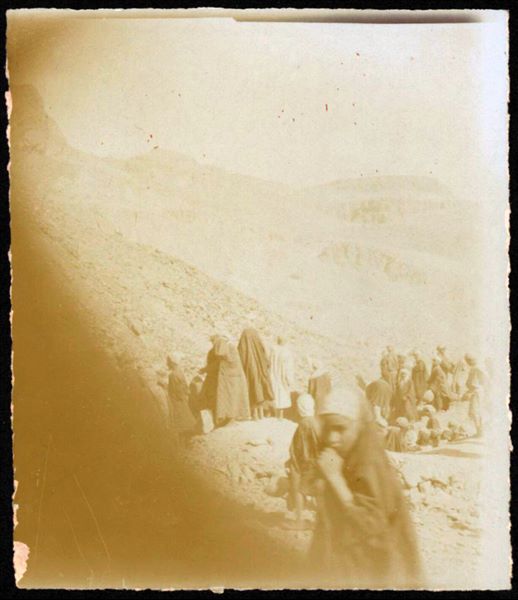
Excavating north of the temple of Hathor. Photograph slightly covered and blurred. Schiaparelli excavations.
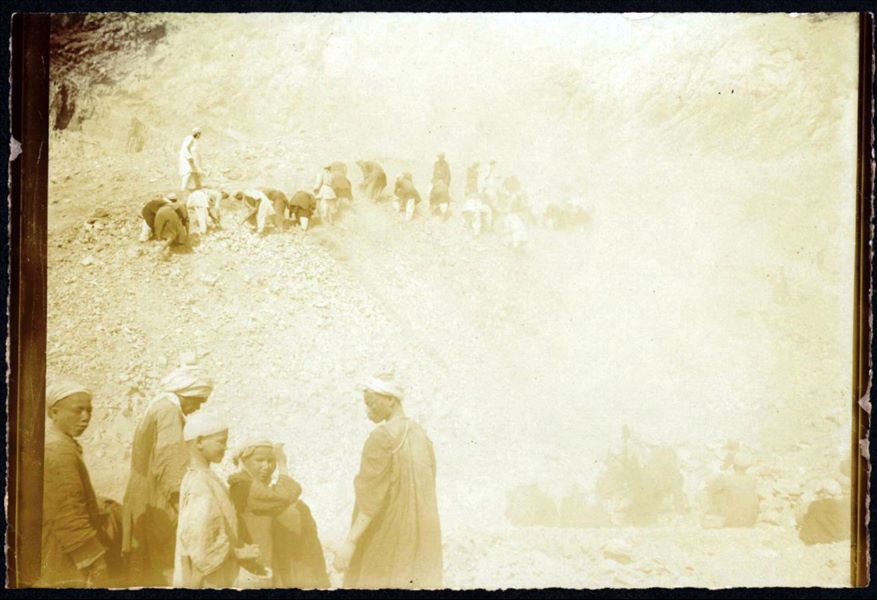
Excavating north of the temple of Hathor. Photograph blurred in the background, and overexposed. This print on paper has been toned with sepia. Schiaparelli excavations.
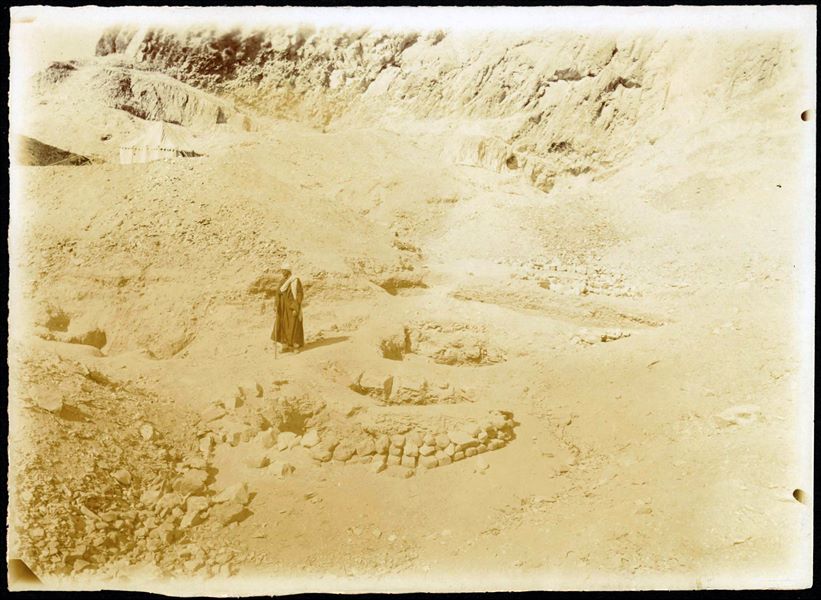
Photograph taken during excavations to the north of the temple of Hathor, where its shadow can be seen on the left. One of the tents used by the Italian Archaeological Mission is also visible on the left. The figure in the centre is unidentifiable. Photograph slightly overexposed. This print on paper has been toned with sepia. Schiaparelli excavations.

Photograph taken during excavations north of the temple of Hathor and facing a mud-brick structure that sticks out from the sand. Schiaparelli excavations.
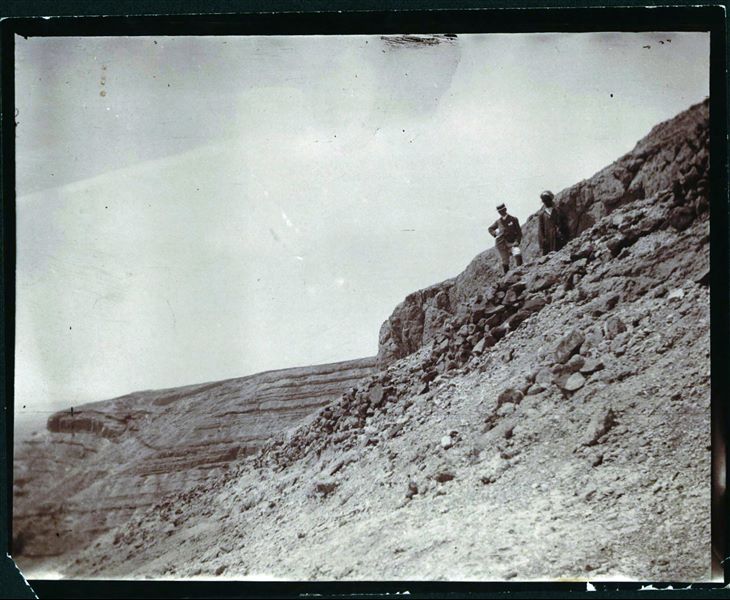
A mountain slope, where there are two unidentifiable figures, but presumably part of the Italian Archaeological Mission. The person dressed in western clothing could be one of the noblemen accompanying Schiaparelli on the 1906 mission. Schiaparelli excavations.
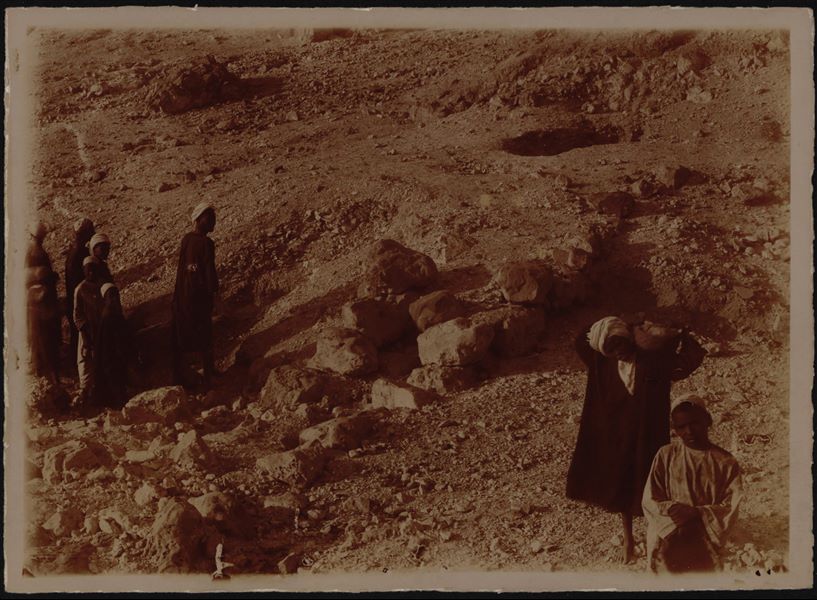
Excavating north of the temple of Hathor. This print on paper has been toned with sepia. Schiaparelli excavations.

